
Majestic Vultures, Kings of the Sky (Photos)
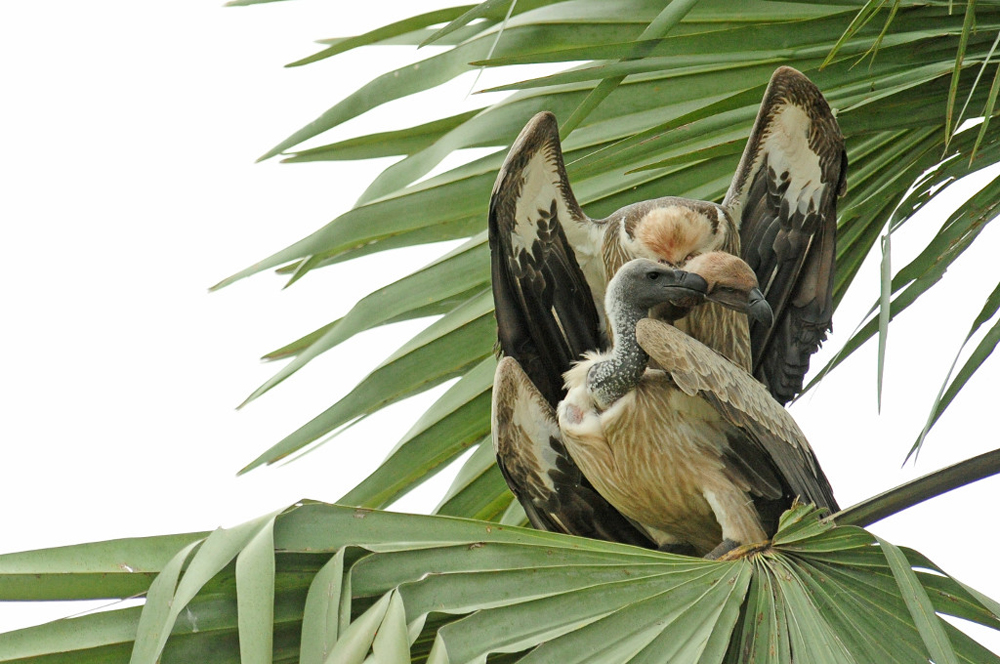
David Oehler is curator of ornithology at the Wildlife Conservation Society's (WCS) Bronx Zoo. Julie Larsen Maher is staff photographer for WCS, the first woman to hold the position since the society's founding in 1895. In addition to documenting field activities, Maher photographs the animals at WCS' five New York-based wildlife parks: the Bronx Zoo, the Central Park Zoo, the New York Aquarium, the Prospect Park Zoo and the Queens Zoo. Oehler works with all birds and is a member of AZA's Andean Condor SSP Steering Committee, which is participating in the current program to conserve Andean condors. The authors contributed this article to Live Science's Expert Voices: Op-Ed & Insights.
The image of vultures gliding above, their outstretched wings with fingerlike tips reaching up to capture the rays of the sun, is nothing short of majestic. The 22 species of vultures are large and impressive birds that live on all continents except Antarctica. These birds of prey use their sizable wings, which span from 6 to 10 feet (1.8 to 3 meters), to ride air currents in search of their next meal of carrion. There is no waste when vultures come to feed.
Ancient cultures revered vultures, using their likeness on pottery, textiles and rock paintings, and incorporating them into Egyptian and Hindu religions. While modern societies may view vultures differently, we accept their role in helping to keep the environment clean.
But these magnificent birds are also persecuted. There are cases of direct slaughter of vultures and mass destruction of their populations. The use of poisons, like the pesticide Carbofuran, continues to cause mortality in wild vulture populations in Africa and Asia.
At the same time, consumption of veterinary drugs administered to livestock that vultures then scavenge upon can kill them. One such drug, Diclofenac, an anti-inflammatory medicine that benefits livestock but causes kidney failure and death in vultures, is thought to have devastated South Asian vulture populations that once numbered in the millions in the skies over India and Pakistan.
Richard Cuthbert, Wildlife Conservation Society's Papua New Guinea program country director, has worked on issues surrounding the conservation of vultures for more than a decade and is the lead author of a recently published paper in the journal Oryx. Cuthbert says work by the Bombay Natural History Society and the Royal Society for the Protection of Birds has demonstrated that the use of Diclofenac to treat cattle in India persists, despite the veterinary ban on its use in India, Nepal and Pakistan in 2006. Moreover, the study shows that another emerging veterinary drug, Nimesulide, is also toxic to vultures in the region, presenting further concerns for this globally threatened group of species.
Society must work toward more stringent control of nonsteroidal anti-inflammatory drugs (NSAIDs) and other toxins if the world's vultures are to be saved. Learn about wildlife on the WCS photo blog, Wild View, including the articles "Imperiled Raptor" and "Celebrate Vulture Awareness Day."
Sign up for the Live Science daily newsletter now
Get the world’s most fascinating discoveries delivered straight to your inbox.
See a gallery of vibrant vulture photos below.
Big birds
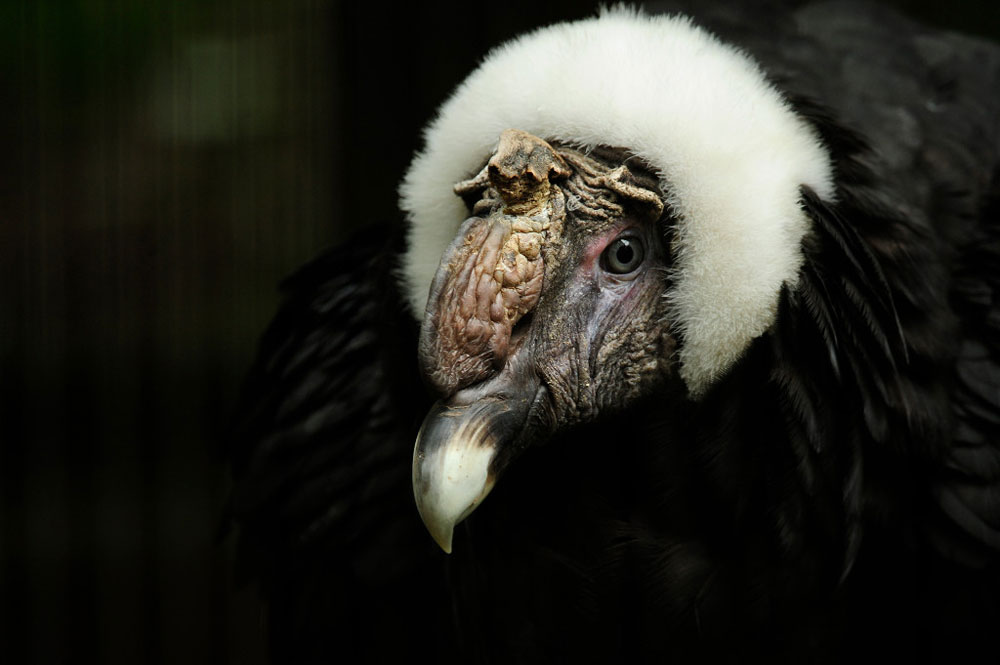
Known for their 10-foot (3 m) wingspan, Andean condors are among the largest birds in the world. They fly among the high peaks and grassy plains throughout the Andes, Patagonia, and coastal regions of western South America — up to 150 miles (241 kilometers) a day in search of carrion, which they locate primarily by sight. As a result of habitat loss, mortality resulting from preying on poisoned carcasses, collision with power lines and hunting by people who believe the birds attack livestock, Andean condors' numbers are declining, especially in the northern part of their range. WCS is bringing conservationists together from across South America to evaluate the Andean condor distribution and threats, and to prioritize their conservation sites as a first step toward developing a conservation strategy for this flagship species of the Andes. (Credit: Julie Larsen Maher ©WCS.)
Better to eat you with...

Vultures have large, strong beaks that help them tear away the hide, flesh and bones of carrion. Veterinary drugs used to treat domestic cattle are killing these birds of prey when they ingest the remains of dead livestock. The use of one such drug, Diclofenac, is a key driver of vultures' decline in Asia. African white-backed vultures, pictured here, are also in decline. Breeding pairs nest high in the tops of large trees across the savannas of Africa. Large numbers of white-backed vultures feed together on a dead animal, often fighting for the best position. Habitat loss and poison have caused their numbers to drop. (Credit: Julie Larsen Maher ©WCS.)
Making it home
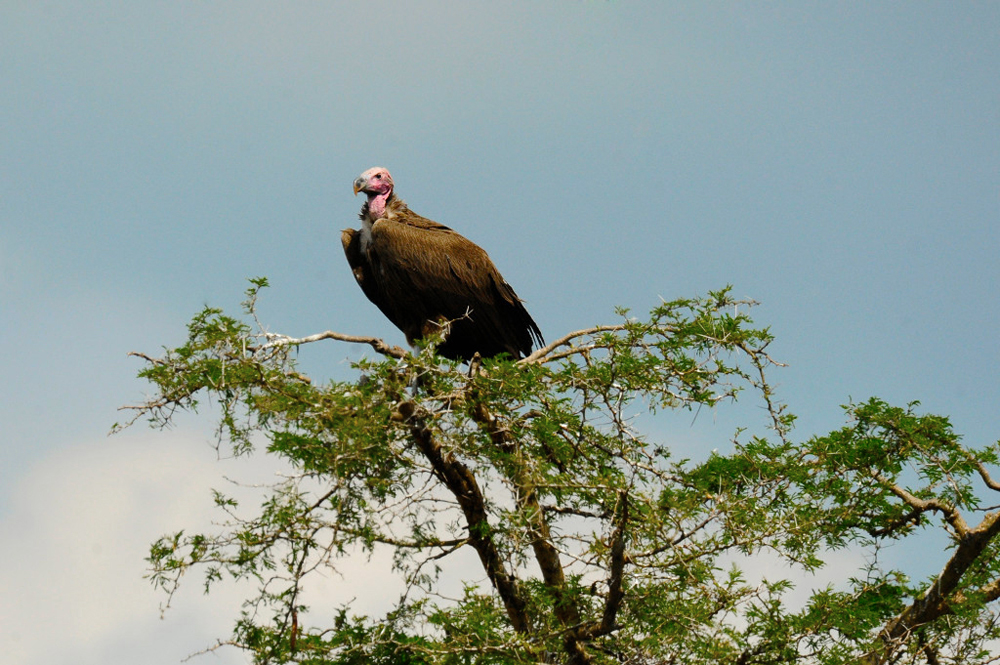
Nubian, or lappet-faced, vultures are among the largest vulture species and prefer to fly and nest in the dry, thorny bush areas of Africa. (Credit: Julie Larsen Maher ©WCS.)
Soaring high above it all
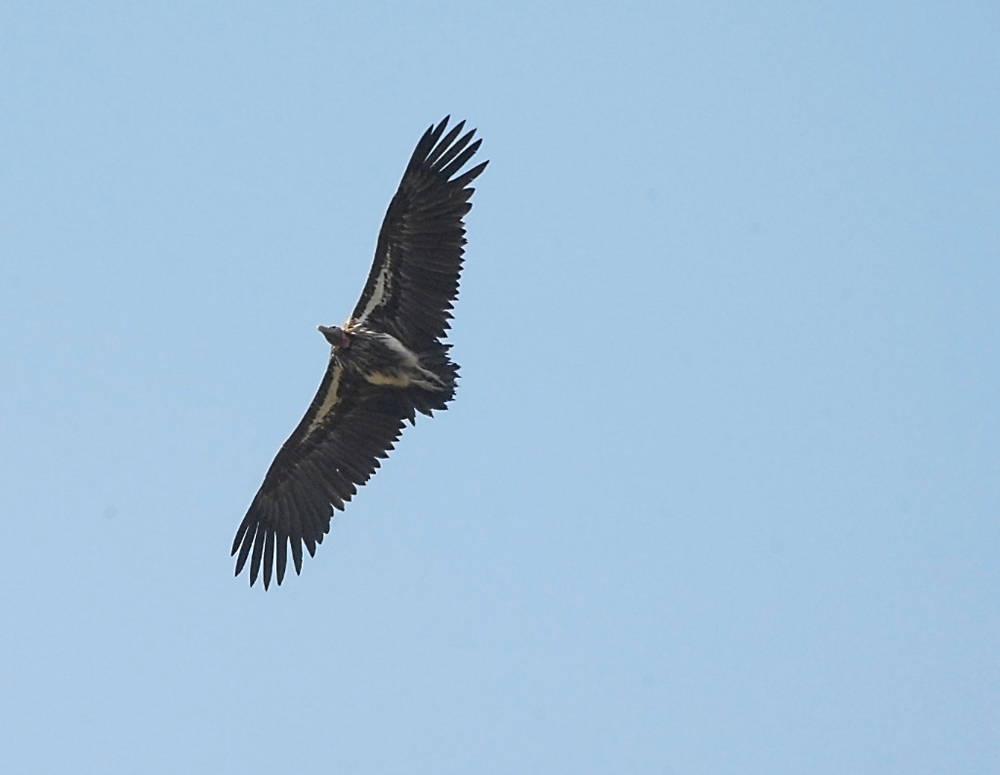
Nubian vultures like to fly solo and perch in scattered trees across the savanna. The decline in their numbers is due to human actions, including habitat disturbance and poisoning of the dead animals they feed upon. (Credit: Julie Larsen Maher ©WCS.)
Endangered Species
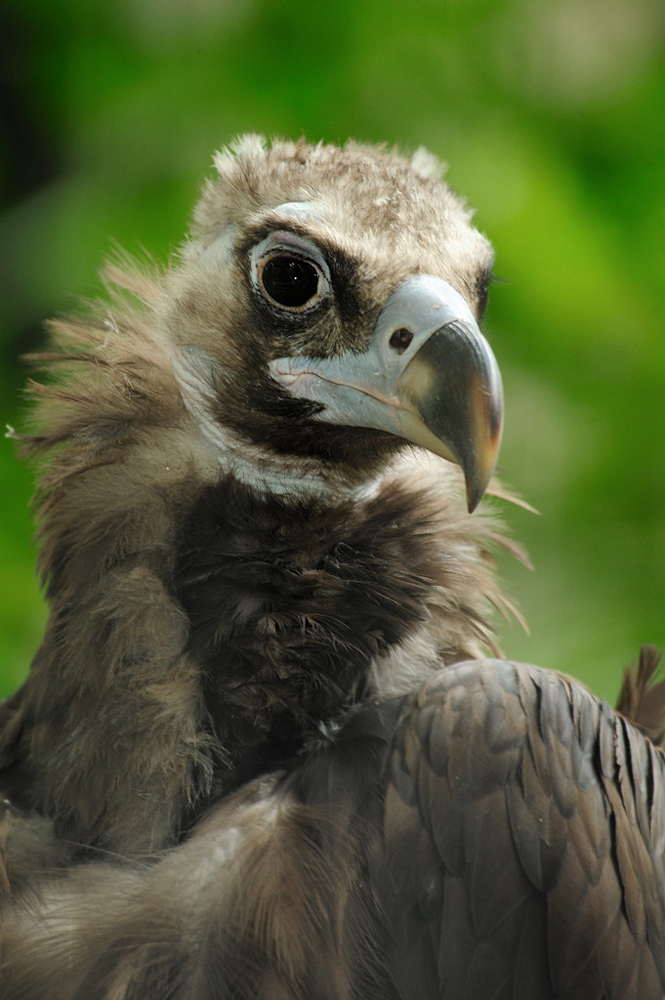
Across Asia, cinereous vultures are losing ground due to human activities. Some have died from poisoned bait and carcasses harboring Diclofenac, while others have been shot and killed for their feathers, placing the future of this bird of prey in jeopardy. (Credit: Julie Larsen Maher ©WCS.)
Extrasensory strengths
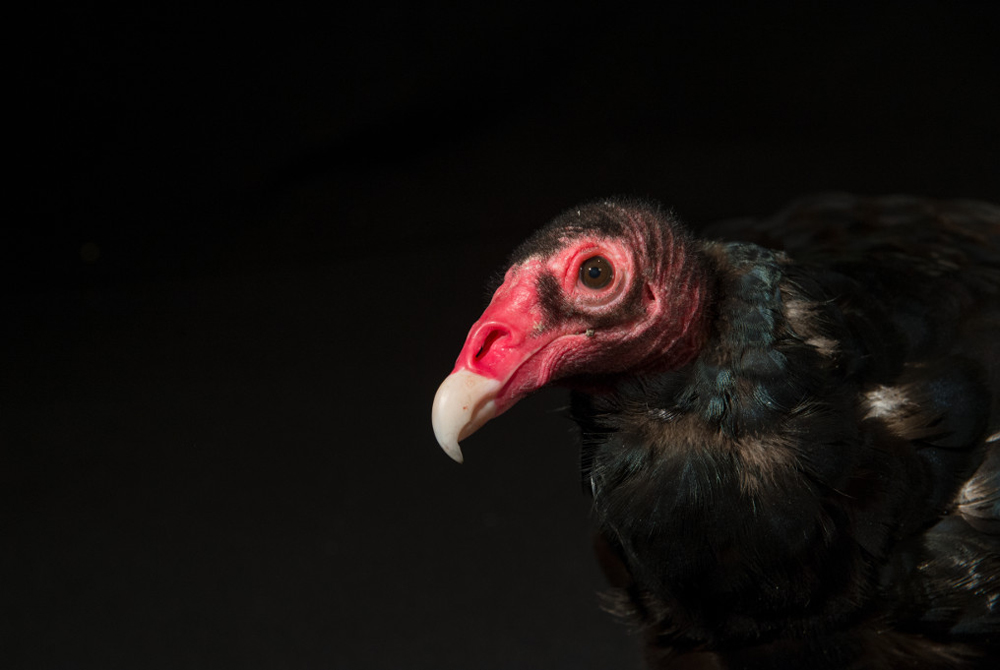
With a nearly 6-foot wingspan, turkey vultures are easy to spot as they fly high across North and South America. Turkey vultures use their acute sense of smell to find their next meal. Yet these birds are vulnerable to poisoning from the lead shot left by hunters in the animals they scavenge. (Credit: Julie Larsen Maher ©WCS.)
Colors abound

King vultures, with their colorful plumage and bright wattles, live in the tropical lowlands of South America. Their sight is good, but their sense of smell is less refined than that of other vulture species. When it's feeding time, they keep a close watch on their fellow vultures in hopes of being led to a carcass meal. (Credit: Julie Larsen Maher ©WCS.)
People watch out!
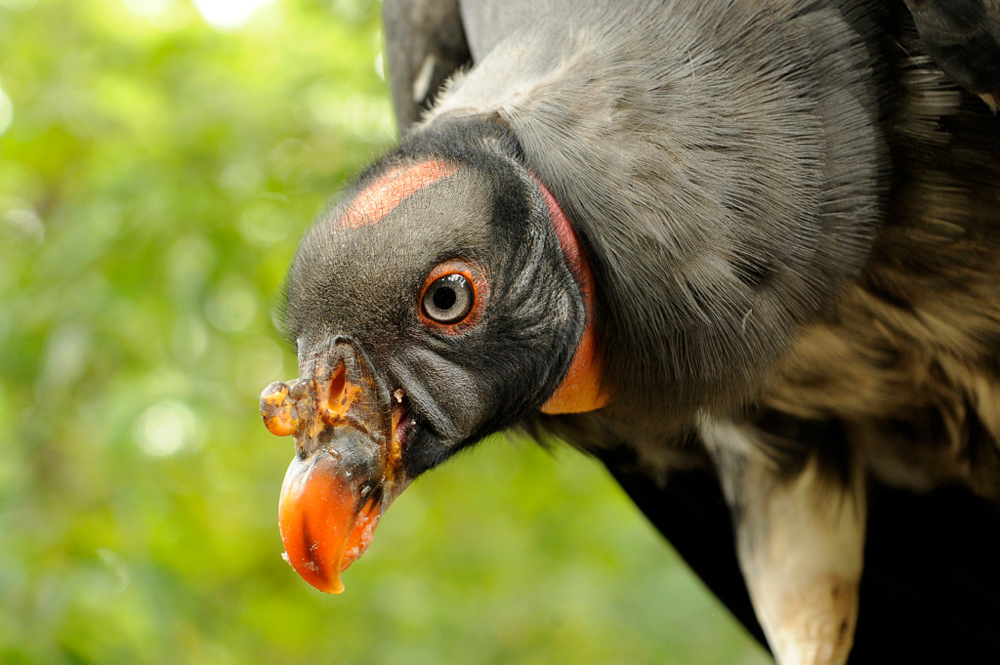
A juvenile king vulture is dark in color. The chick's feathers remain brown for about one and a half years until their adult plumage comes in. Their habitat is disappearing across their range in South America due to human activity. (Credit: Julie Larsen Maher ©WCS.)
Using the winds
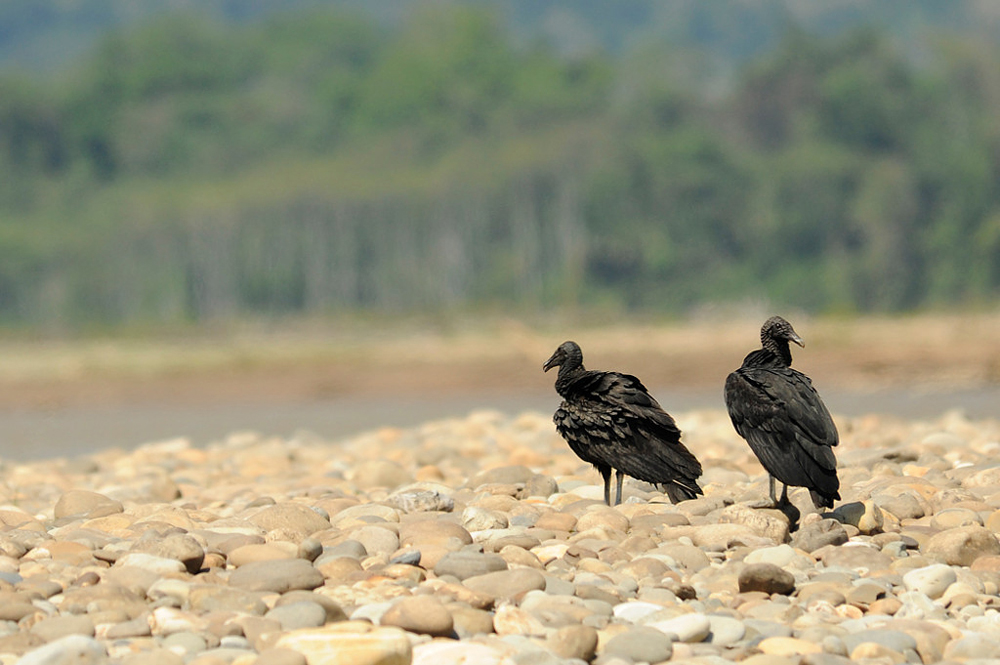
Black vultures find carrion while gliding on the thermals in the skies of southernmost North America and throughout Central and South America. They are social birds and are often found flying and feeding in groups. They are susceptible to toxins and other poisons, like lead, often found in the remains they feed upon. (Credit: Julie Larsen Maher ©WCS.)
Origami vulture
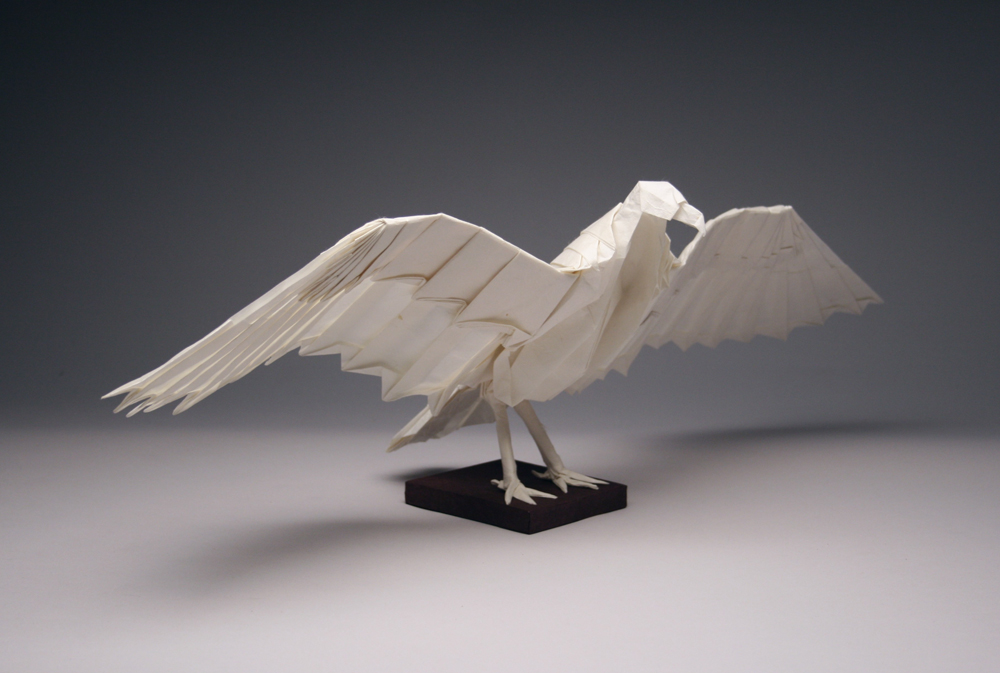
A vulture with a 15-inch wingspan, composed in 2009 from one uncut square of Korean Hanji paper by origami artist and mathematician Robert Lang. It's based on "Richard," one of the oldest turkey vultures known to be in captivity, who can be seen (for real) at the Lindsay Wildlife Museum. (Credit: Robert Lang, www.langorigami.com.)
Follow all of the Expert Voices issues and debates — and become part of the discussion — on Facebook, Twitter and Google+. The views expressed are those of the author and do not necessarily reflect the views of the publisher. This version of the article was originally published on Live Science.









